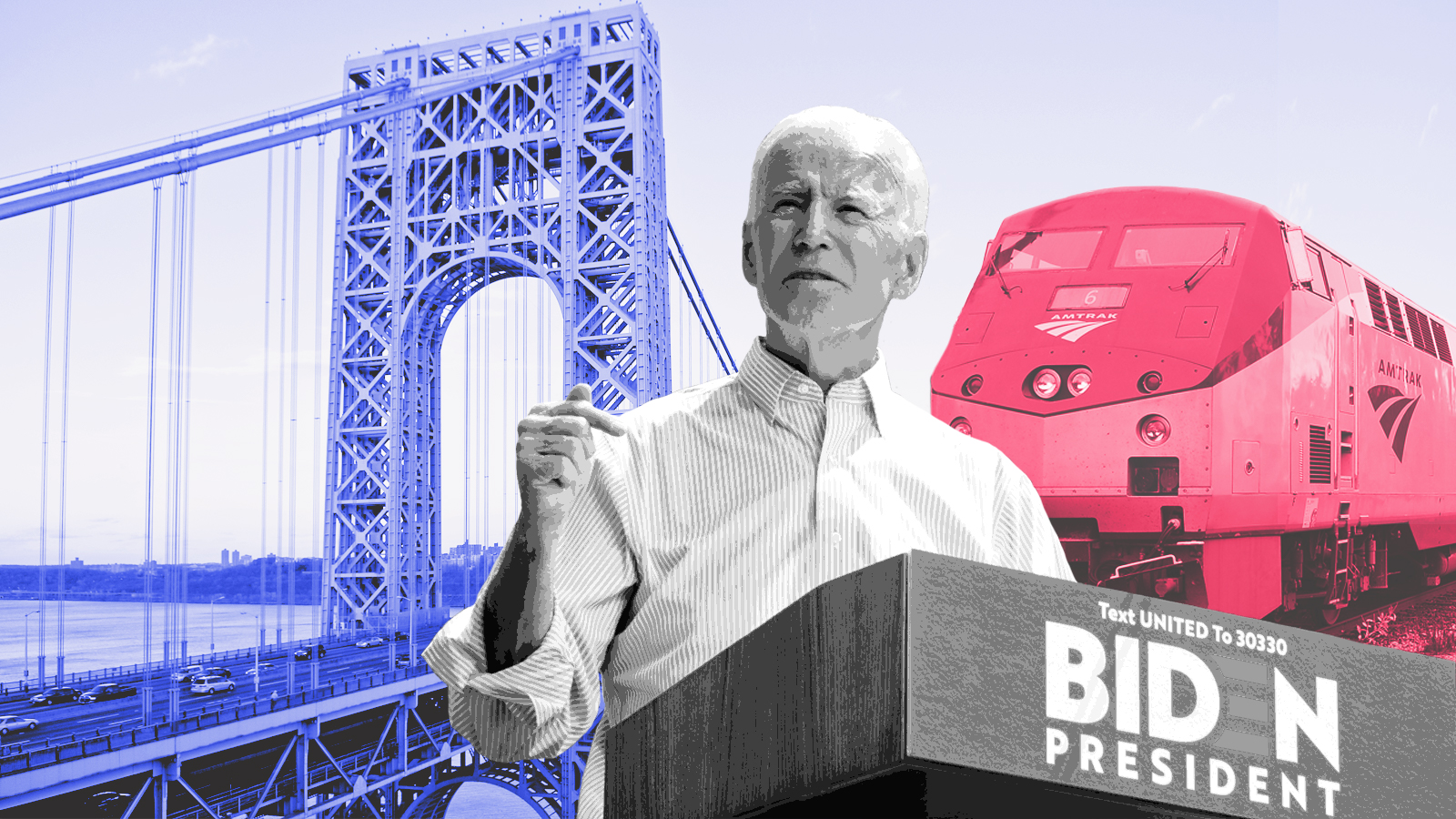
Aerial photo of Boston, showing The Greenway running through the middle.
Boston’s Central Artery Project, also known as the Big Dig, is one of the largest civil engineering ventures ever undertaken in the US. In fact, it was so vast in its scale that it has been described as multiple interconnected mega-projects.
By the time of its completion in 2006, it had laid 2.9 million cubic metres of concrete, excavated more than 12 million cubic metres of soil, and completely transformed downtown Boston.
The project’s aim was to replace a section of raised highway (the Central Artery) running through Boston with a tunnel underneath the city. At the same time, it would better connect Logan International Airport with the downtown area by constructing the Ted Williams Tunnel under the harbour and the Leonard P Zakim Bunker Hill Memorial Bridge (to give it its full title) over the Charles River. All this work was badly needed – in the early 1990s, traffic jams crawled along the Central Artery for up to 10 hours a day, making local road journeys unbearable. That figure was predicted to reach 16 hours a day by 2010.
Originally estimated to cost $2.8bn and be finished by 1998, the true cost was actually closer to $22bn and the completion date was eight years later than first planned. (Following a partial tunnel collapse in July 2006 that caused the death of a motorist, further work was needed that went into 2007). Delays, leaks, design flaws and even fraud meant that more things went wrong than right for the infamous mega-project and it will be several decades before it is paid off with the help of road toll charges and state taxes.
Slide from left to right to see before and after
Getting started
The Central Artery Project was the dream of Massachusetts transport secretary Fred Salvucci, but it took him 16 years to get approval for funding and it was vetoed by then-president Ronald Reagan. It eventually got through Congress by a single vote in 1987 and broke ground in 1991.
Salvucci was adamant that the work had to be done without removing any homes or disrupting the lives and businesses of Bostonians, as opposed to the original construction of the Central Artery in the 1950s – which split neighbourhoods and displaced 20,000 people. Construction of a giant subterranean highway tunnel had to be completed while traffic continued along the elevated highway above. At the time, locals compared it to a doctor trying to perform open-heart surgery while the patient is running a marathon.
“If the Big Dig was happening today, everything would be planned and designed in the digital world first, effectively creating a ‘digital twin’ of the project before a spade was put in the ground,” says James Garner, global head of insights and analytics at Gleeds. “This would have provided the team with the benefit of having significant amounts of structured data to utilise and interrogate to help make design and planning decisions.”
However, the design process began in 1982, 40 years ago, “when manual calculations, drawings and design were the norm,” he adds.
Michael Hardman MRICS, director at Turner & Townsend also points to the analogue nature of the cost prediction and planning techniques. “It is likely that all the estimating, take-offs, overlays and calculations would have been done on paper and by hand,” he says. “A painstaking process even for less complex schemes and really difficult to ensure full coverage and sense checking at each level and scope of work.
“It’s important to remember the project took 25 years to conceive, plan, design and construct. The pace and scale of technological and societal change over this 25-year period was absolutely rapid. The use of benchmark data or intelligent data would have been virtually non-existent when the project was being estimated.”
These days, environmental concerns play a major part in the planning stages of major infrastructure projects, but this wasn’t so high on the agenda in the 1980s. “Sustainability would have been one of the key criteria when setting the project brief if it was done now,” says Garner. “Embodied carbon and whole life carbon calculation would be carried out at the outset. This might have led to totally different decisions being made.”
Spiralling costs
One of the most headline grabbing aspects of the Big Dig is the gap between the original budget estimate of $2.8bn and what it ended up costing – approximately $22bn. Less of a gap and more of a gaping chasm, billions of dollars wide.
However, Petros Kwan, research analyst at the Cornell Program in Infrastructure Policy, believes there is a good reason for this. “Cost underestimates for the Big Dig must be understood from a standpoint where political support for the project would have been non-existent if the true extent of its costs had been revealed,” says Kwan. “This phenomenon frequently occurs in public works projects.”
“The 1982 estimate for the project did not take inflation into account, with the assumption that inflation costs would be captured by biannual project updates. This lack of an inflation projection mechanism makes it difficult to even quantify the eventual total cost of inflation for the project.”
On a construction project covering such a vast area of Boston, unforeseen costs were always likely too. For example, when the tunnelling for the Central Artery reached Boston’s South Station railway, the soil was found to be highly unstable. The solution was to bring in refrigerator units to freeze the ground and allow work to continue below, while trains rumbled along overhead.
One of the Big Dig’s more dramatic moments came in the early hours of Saturday 22 September 2001, when a section of tunnel being placed under the river started leaking where a waterproof seal had burst. Around 70,000 gallons of water a minute came pouring in to one side of the tunnel, which, left unchecked, could have dislodged the tunnel from its foundations and been a disaster for the project. Swift action was needed and the team in charge decided to deliberately flood the entire tunnel and its casting basin to equalise the pressure. It worked, but a lot of equipment was damaged or destroyed.
And in 2007, concrete supply company Aggregate Industries agreed to pay $50m to settle a lawsuit brought against it by federal authorities for supplying substandard concrete to the Big Dig. It was alleged the company had supplied 5,000 truckloads of concrete that was too old or had failed quality inspections.
“Political support for the project would have been non-existent if the true extent of its costs had been revealed” Petros Kwan, Cornell Program in Infrastructure Policy
Modern benchmarking
Hardman believes modern cost management techniques, such as ICMS benchmarking, would have made a significant difference to the time and budget overruns experienced on the Big Dig.
He says: “The technological advances would have made sure that: the estimators had access to lots of relevant, current and normalised data to base their estimates on; the data was easy to digest, review and amend; data could be shared live with relevant parties and updated at the click of a button; changes to drawings and designs could have been reviewed quickly with overlays to ensure that all scope was captured and priced in the estimate; and modern land surveying techniques would have identified any issues with utilities, historical discoveries or poor subsurface conditions before the project was estimated.
“Benchmarking tools such as ICMS and modern technology offer clients much more certainty and surety when it comes to cost estimating, but it is also important to remember that these tools alone will not solve all the estimating issues on projects.”
Garner adds that on a project the size of the Big Dig there would have been a lot of opportunities for sharing data and best practice. “With 118 separate construction contracts on the project, there was the potential for ‘lessons learned’ to have been properly tracked and exploited for the continuing phases of the project,” he says.
“Most data analytics are based upon statistics in some shape or form, so the general principles and techniques would be similar, but we are now able to apply these techniques much faster and refresh these calculations multiple times to give a real time view.”
Social value
At its peak, the Big Dig employed more than 5,000 workers in a range of construction jobs, all earning a salary and improving their skills. This was part of the project’s social value for Bostonians, beyond the obvious practical element of gaining new highways.
Gerard Toplass is CEO of The 55 Group, which includes Loop, a social value measurement platform. He believes that a project the size of the Big Dig, or more recently HS2 in the UK, should be a “living lab” for innovation and new ways of doing things. That includes the construction process itself, as well as training people and looking after their health and wellbeing.
“Social value isn’t a new concept, it’s been around for hundreds of years,” says Toplass. “If you look at Bournville (a village built for Cadbury’s workers) and the Rowntree trusts, the entrepreneurs who ran these big businesses understood that if you look after your people, give them homes and education and good medical care, you get a better employee and therefore a better product.
“If you’ve got young people working on these projects, they are learning new skills. They’re becoming more valuable workers and earning while they’re learning. Then they’re wanting to stay in that sector and further develop those skills.
“A large-scale infrastructure project also provides an opportunity to bring SMEs and micro-SMEs into the supply chain, which can have a massive impact because you’re bringing energy, innovation and entrepreneurialism. That has a social value.”
“If the Big Dig was happening today, everything would be planned and designed in the digital world first, effectively creating a ‘digital twin’ of the project” James Garner, Gleeds
Problems with the mob
In the final years of the project, problems The Big Dig had encountered with organised crime began to surface.
An FBI sting on alleged mob leader Carmen ‘The Cheese Man’ DiNunzio led to him being found guilty of delivering a $10,000 bribe to secure a $6m soil contract. In 2009, he was sentenced to six years in prison.
In 2000, police dug up the bodies of six people who had been murdered by the notorious Winter Hill Gang. The bodies are believed to have been there since the 1970s and were unearthed by the tunnelling works.
Major accomplishments
During its construction, the Big Dig was judged by many to be an expensive disaster that saw good money thrown after bad. But time has been a healer and it is now looked upon more favourably in many quarters.
The land where the old elevated highway ran through Boston has become green space for everyone to enjoy and created more than 45 parks and major public plazas. It’s called The Greenway and connects the city with the waterfront. And, after the project’s completion, an estimated 12% drop was observed in the city's carbon monoxide levels.
“Removing traffic from the surface of Boston’s downtown has allowed for the rehabilitation of spaces along the Central Artery,” says Kwan. This has created a more cohesive streetscape that did not exist when this was an elevated roadway which cut off segments of the city from each other. This has had the ultimate effect of rejuvenating downtown Boston, while enabling it to avoid pitfalls such as a decline of the city’s urban core.”
The real estate surrounding The Greenway has benefitted too and will continue to do so for years to come, says Toplass: “Part of the lasting legacy is the value of the property and assets 25, 50 and maybe even 100 years in the future. If you develop an area, and this happened in Boston, the property values increase quite significantly.”
However, says Kwan: “There was a missed opportunity with value capture – private landowners and developers with property bordering what is now The Greenway have benefitted from big windfalls as the value of their land has shot up.” Should they have contributed to that which they now benefit from?
Hardman is of the opinion that, ultimately, the Big Dig’s achievements are remarkable. He says: “They built 161 lane miles of highway, four major highway interchanges and more than 80 miles of highway through tunnels. The infrastructure improvements revolutionised Boston and provided a strong platform for the city’s future growth.”
Something that may plague the Big Dig for many years is its image as a fraught and troublesome infrastructure project. “Once a project is perceived as being a problem it is very hard to shake that label,” says Garner. “Therefore, the biggest failure was probably not setting the expectations right in the first place in terms of budget, disruption and risks.”
“The infrastructure improvements revolutionised Boston and provided a strong platform for the city’s future growth” Michael Hardman MRICS, Turner & Townsend




